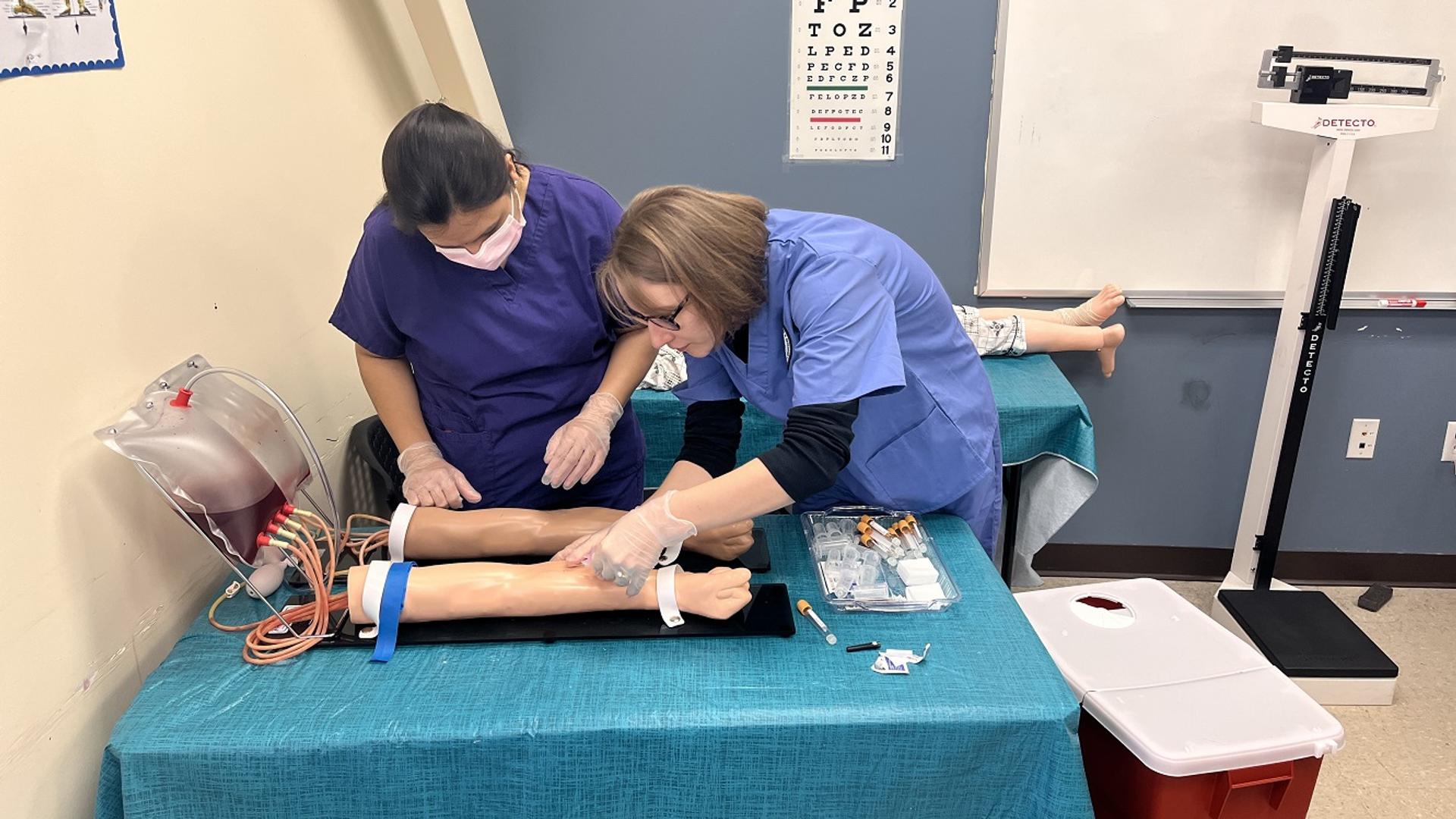8 Simple Techniques For Northeast Medical Institute - New Haven Campus Phlebotomy Course & Cna Class
8 Simple Techniques For Northeast Medical Institute - New Haven Campus Phlebotomy Course & Cna Class
Blog Article
Some Known Details About Northeast Medical Institute - New Haven Campus Phlebotomy Course & Cna Class
Table of ContentsExamine This Report about Northeast Medical Institute - New Haven Campus Phlebotomy Course & Cna ClassNot known Factual Statements About Northeast Medical Institute - New Haven Campus Phlebotomy Course & Cna Class The 8-Minute Rule for Northeast Medical Institute - New Haven Campus Phlebotomy Course & Cna ClassTop Guidelines Of Northeast Medical Institute - New Haven Campus Phlebotomy Course & Cna ClassNortheast Medical Institute - New Haven Campus Phlebotomy Course & Cna Class Can Be Fun For AnyoneNot known Facts About Northeast Medical Institute - New Haven Campus Phlebotomy Course & Cna Class
The use of such devices need to be come with by various other infection prevention and control techniques, and training in their usage. Not all safety devices are appropriate to phlebotomy. Before selecting a safety-engineered tool, customers must extensively check out offered tools to identify their appropriate usage, compatibility with existing phlebotomy practices, and efficiency in securing staff and people (12, 33).For setups with low sources, cost is a driving variable in procurement of safety-engineered devices. Where safety-engineered gadgets are not readily available, knowledgeable usage of a needle and syringe is appropriate.
labelling); transportation conditions; analysis of outcomes for scientific administration. In an outpatient division or facility, give a committed phlebotomy work area containing: a clean surface with 2 chairs (one for the phlebotomist and the various other for the individual); a hand wash basin with soap, running water and paper towels; alcohol hand rub. In the blood-sampling area for an outpatient division or facility, supply a comfortable reclining couch with an arm remainder.
The Northeast Medical Institute - New Haven Campus Phlebotomy Course & Cna Class Statements
Guarantee that the indicators for blood sampling are plainly specified, either in a composed method or in documented guidelines (e.g. in a laboratory type). In all times, comply with the strategies for infection prevention and control provided in Table 2.2. Infection prevention and control techniques. Accumulate all the tools required for the treatment and area it within risk-free and easy reach on a tray or cart, ensuring that all the items are plainly noticeable.
Present on your own to the client, and ask the individual to mention their full name. Inspect that the research laboratory kind matches the person's identity (i.e. match the individual's details with the lab type, to ensure accurate identification).
Make the individual comfortable in a supine placement (preferably). Location a clean paper or towel under the individual's arm. Go over the test to be executed (see Annex F) and get spoken authorization. The individual has a right to reject a test any time prior to the blood tasting, so it is crucial to guarantee that the individual has actually comprehended the treatment.
The Only Guide to Northeast Medical Institute - New Haven Campus Phlebotomy Course & Cna Class
Extend the person's arm and inspect the antecubital fossa or forearm. Find a blood vessel of a good size see this website that is noticeable, straight and clear. The layout in Section 2.3, reveals usual settings of the vessels, yet many variations are feasible. The typical cubital vein lies in between muscles and is generally one of the most very easy to penetrate.
DO NOT insert the needle where veins are drawing away, due to the fact that this boosts the opportunity of a haematoma. Locating the blood vessel will certainly assist in identifying the right size of needle.
Samplings from central lines bring a threat of contamination or erroneous research laboratory test outcomes. It is acceptable, yet not suitable, to draw blood specimens when initial introducing an in-dwelling venous device, prior to linking the cannula to the intravenous fluids.
The Single Strategy To Use For Northeast Medical Institute - New Haven Campus Phlebotomy Course & Cna Class
Failing to permit adequate get in touch with time enhances the risk of contamination. DO NOT touch the cleaned website; in certain, DO NOT put a finger over the blood vessel to guide the shaft of the exposed needle.
Ask the individual to develop a clenched fist so the capillaries are more famous. Enter the vein promptly at a 30 level angle or less, and proceed to present the needle along the capillary at the easiest angle of access - Phlebotomy Training. Once enough blood has actually been gathered, launch the tourniquet prior to taking out the needle
Our Northeast Medical Institute - New Haven Campus Phlebotomy Course & Cna Class PDFs
Take out the needle gently and use mild pressure to the website with a tidy gauze or completely dry cotton-wool round. Ask the individual to hold the gauze or cotton woollen in position, with the arm expanded and elevated. Ask the client NOT to flex the arm, due to the fact that doing so creates a haematoma.

Facts About Northeast Medical Institute - New Haven Campus Phlebotomy Course & Cna Class Uncovered
Do not push the syringe bettor due to the fact that additional stress enhances the risk of haemolysis. Where possible, keep the tubes in a rack and move the rack towards you. Inject downwards into the suitable coloured stopper. DO NOT eliminate the stopper due to the fact that it will certainly launch the vacuum cleaner. If the sample tube does not have a rubber stopper, inject very slowly into the tube as minimizing the pressure and velocity made use of to move the specimen decreases the danger of haemolysis.

Report this page